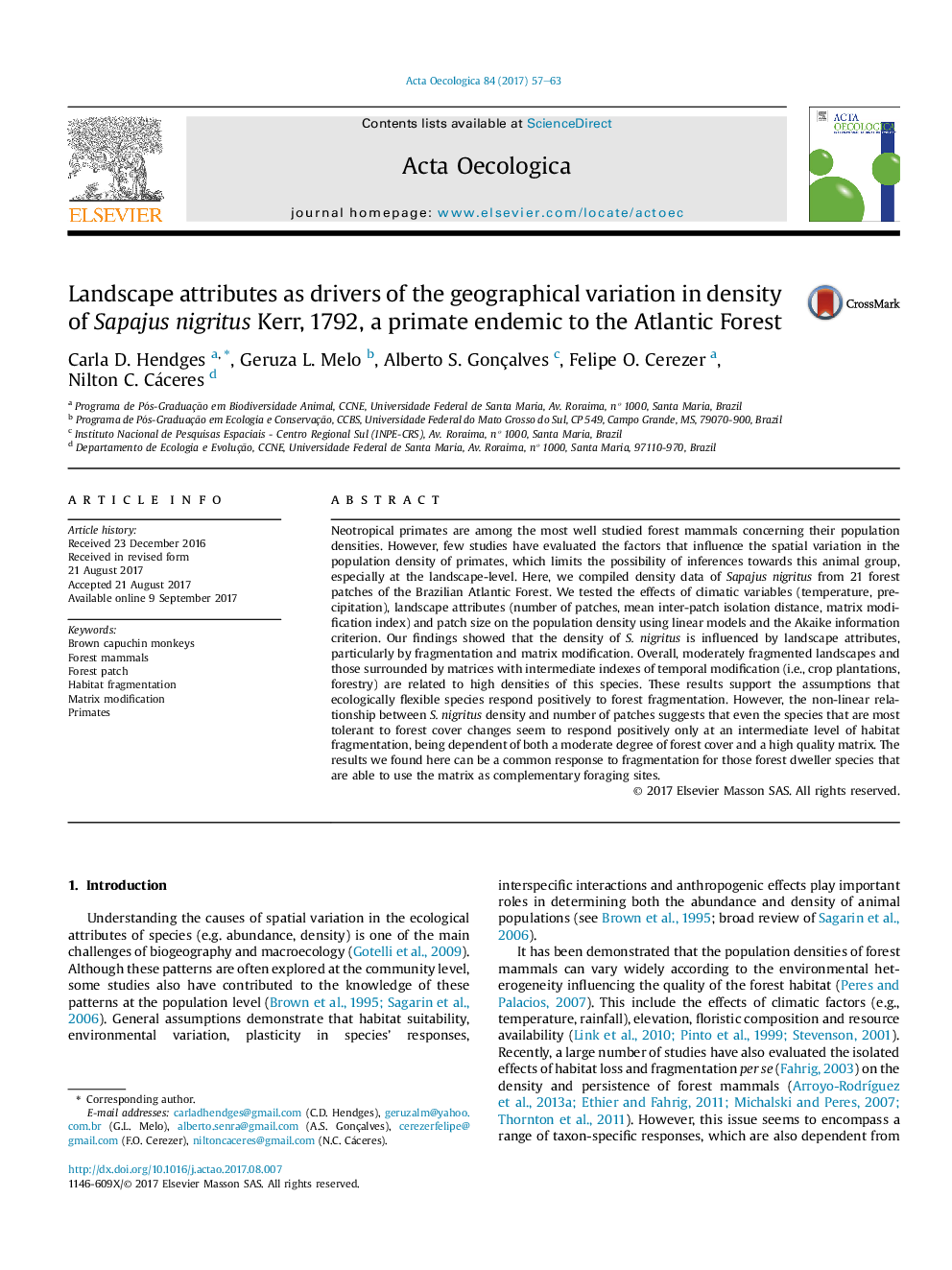| کد مقاله | کد نشریه | سال انتشار | مقاله انگلیسی | نسخه تمام متن |
|---|---|---|---|---|
| 5742495 | 1617688 | 2017 | 7 صفحه PDF | دانلود رایگان |

- Number of patches has a significant influence on density of Sapajus nigritus.
- Density is also associated with temporal modification of matrix.
- Ecologically flexible species are dependent on forest cover and matrix quality.
Neotropical primates are among the most well studied forest mammals concerning their population densities. However, few studies have evaluated the factors that influence the spatial variation in the population density of primates, which limits the possibility of inferences towards this animal group, especially at the landscape-level. Here, we compiled density data of Sapajus nigritus from 21 forest patches of the Brazilian Atlantic Forest. We tested the effects of climatic variables (temperature, precipitation), landscape attributes (number of patches, mean inter-patch isolation distance, matrix modification index) and patch size on the population density using linear models and the Akaike information criterion. Our findings showed that the density of S. nigritus is influenced by landscape attributes, particularly by fragmentation and matrix modification. Overall, moderately fragmented landscapes and those surrounded by matrices with intermediate indexes of temporal modification (i.e., crop plantations, forestry) are related to high densities of this species. These results support the assumptions that ecologically flexible species respond positively to forest fragmentation. However, the non-linear relationship between S. nigritus density and number of patches suggests that even the species that are most tolerant to forest cover changes seem to respond positively only at an intermediate level of habitat fragmentation, being dependent of both a moderate degree of forest cover and a high quality matrix. The results we found here can be a common response to fragmentation for those forest dweller species that are able to use the matrix as complementary foraging sites.
Journal: Acta Oecologica - Volume 84, October 2017, Pages 57-63